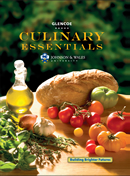1 A) 32°F to 42°F (0°C to 5°C) B) 78°F to 82°F (26°C to 28°C) C) 85°F to 95°F (29°C to 35°C) D) 100°F to 115°F (38°C to 46°C) 2 A) 0% to 1% B) 5% C) 5% to 10% D) 10% 3 A) hard lean dough B) soft medium dough C) sweet rich dough D) soft lean dough 4 A) eggs B) butter C) salt D) cold milk 5 A) It is sweeter and richer. B) It is rich in eggs. C) Both A and B are correct. D) Neither, Danish pastry is another term for croissant. 6 A) blending method B) straight-dough method C) modified straight-dough method D) sponge method 7 A) mixing, kneading, rising, cleanup B) scaling, mixing, kneading, fermenting C) mixing, kneading, pickup, cleanup D) pickup, cleanup, development, final clear 8 A) You cannot overmix or over knead dough. B) You will cause the ingredients in the dough to let down. C) The dough will not rise. D) You will cause the yeast in the dough to ferment. 9 A) water B) whole egg and water C) egg white and water D) milk 10 A) The egg remains uncooked, presenting the risk of salmonella bacteria. B) The egg will cause the bread to be soggy. C) The egg will affect the taste of the bread. D) The egg remains uncooked, presenting the risk of e. coli bacteria.














